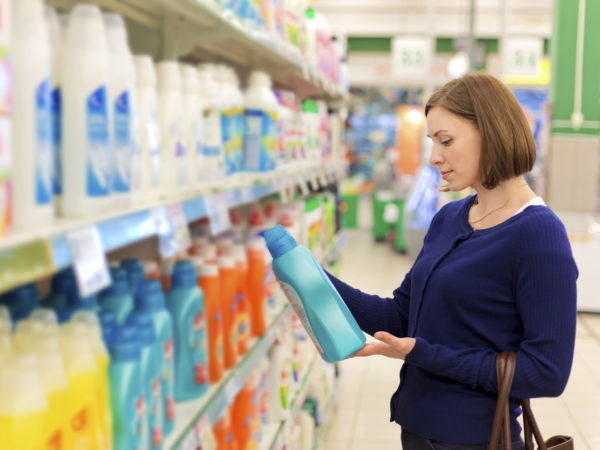Are Unscented Detergents Harmful?
I’ve read that even the fragrance-free laundry detergents, dishwashing detergents, and other cleaning products can cause allergic reactions because, even though they are fragrance-free, apparently they still contain harmful chemicals that are given off into the air. What is your opinion?
Andrew Weil, M.D. | December 18, 2012

It is certainly true that more and more products today are scented – mostly with chemicals that have replaced the natural fragrances of the past. A new study from the Environmental Working Group (EWG), a Washington, D.C. based non-profit organization that advocates for public health policies, describes the fragrances used to perfume air fresheners, cleaning products (including detergents), personal care products and other consumer goods as complex chemical mixtures. According to the EWG, studies have shown that fragrances in air fresheners can trigger asthma attacks, headaches, and breathing problems. In its 2012 Guide to Healthy Cleaning, the EWG notes that because manufacturers routinely refuse to list individual ingredients in fragrances, it is difficult for independent researchers to identify chemicals in the mixtures that could be responsible for the asthma attacks and other reactions consumers may develop.
And it is true that products labeled “fragrance free” are often scented with synthetic compounds that mask the smells of the other chemicals they contain. You won’t see these “masking” chemicals named on product labels either, since manufacturers generally regard them as trade secrets and are not required to list them. The words “natural,” “organic,” or “hypoallergenic” also do not guarantee that a product is fragrance-free.
The EWG guide also reported that a recent investigation of Italian household cleaning supplies indicated that many common ingredients – including preservatives, fragrances, solvents and surfactants – are skin allergens or irritants; some are also respiratory allergens and irritants that can cause asthma or worsen asthma symptoms. In addition, a study from the University of Washington published in January 2009 in the Environmental Impact Assessment Review found that fragranced consumer products “can contain chemicals that are not disclosed to the public through product labels or material safety data sheets (MSDSs)….” In an analysis of six best-selling products, researchers identified nearly 100 volatile organic compounds (VOCs) none of which was listed on the product label; only one was listed on the MSDS. Of these VOCs, the study identified 10 that are regulated as toxic or hazardous under federal laws, with three (acetaldehyde, chloromethane, and 1,4-dioxane) classified as Hazardous Air Pollutants (HAPs). We know that VOCs can cause respiratory irritation; damage to the central nervous system, liver and kidneys; nausea, headaches, and lack of coordination. The most common symptoms that occur with exposure to VOCs are eye irritation, nose and throat discomfort, breathing problems, allergic skin reactions, headache, nausea, vomiting, fatigue, dizziness and nosebleeds.
If you develop any symptoms that you suspect are caused by household cleaning products, it is probably a good idea to avoid commercial detergents and other household cleansers, with or without obvious fragrances. I suggest taking a look at the EWG’s 2012 Guide to Healthy Cleaning to find out how the products you use rate and see which ones of the more than 2,000 the EWG investigated have been deemed safest. Consider also my recommendations on this site for natural household cleaning products.
Andrew Weil, M.D.









